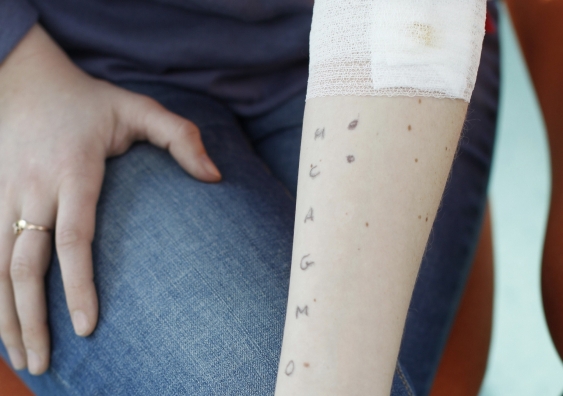University Of New South Wales Researchers Suggest For Knowledge About Penicillin Allergy
A staggering 18-25 per cent of Australian hospital inpatients report that they have an antibiotic allergy. Around half of these allergies will be against the most frequently used beta-lactam antibiotics, commonly known as ‘penicillin allergies’.
Patients with reported penicillin allergies tend to have poorer outcomes in hospital: longer stays, higher chances of infection with antibiotic-resistant ‘superbugs’, and higher mortality. Penicillin allergies are also bad news for the health system, necessitating the use of broad-spectrum second-line or third-line antibiotics, which are expensive and contribute to antimicrobial resistance.
But studies show that for most people with a self-reported penicillin allergy, when they are tested for penicillin allergy via skin tests and oral administration (known as “challenge” or “provocation testing”), they have no reaction. These people can then be labelled non-allergic, in a process is known as penicillin allergy ‘delabelling’.
“When you go to the trouble of skin testing and challenging people, around 90 per cent don’t actually have penicillin allergy. One problem is it’s so much work to do all of that safely,” says Dr Winnie Tong, allergy researcher at UNSW Medicine & Health and clinical immunologist at St Vincent’s Hospital Sydney.
Delabelling is important to give people a more accurate idea of their penicillin allergy status, which could be important if they end up in hospital. But it’s often a complicated, expensive process, which patients and healthcare providers don’t fully understand. Researchers at UNSW including Dr Tong are working to change this.
Allergy misconceptions
Why do so many Australians believe that they have a penicillin allergy? According to Dr Tong, it often begins in childhood.
“Many patients say their parents told them. For example, one person has a reaction and the parents are concerned others in the family could be allergic, even though penicillin allergy is not inherited,” Dr Tong says.
Some people have experienced a reaction to penicillin as children, been labelled as allergic, and then avoided it ever since. However, if more than a decade has passed since that initial reaction, 80 per cent of people will have no longer have the allergy over time.
There are several other reasons why someone could be incorrectly labelled as allergic to penicillin. Some people experience drug side effects which are mistaken as an allergic reaction. And some people develop a skin rash when taking amoxicillin, which is due to viral infection but not allergy.
Unfortunately, removing the penicillin allergy label is not a simple process.
Barriers to delabeling
“Medicine is a risk averse system. It’s very easy to label someone as allergic, and tell them to avoid penicillins for the rest of their life,” Dr Tong says.
“But it’s very difficult then to safely say to someone, you can take away that label, and you can have penicillins.”
Delabelling usually occurs in a hospital setting with a specialist immunologist, along with doctors and nurses to monitor the patient in case of a reaction. This means that the process is expensive and patient capacity is limited. For example, Dr Tong’s wait time is between six to 12 months depending on the patient’s condition.
Also, once a patient completes allergy testing and their penicillin allergy label is removed, it’s not over. Breakdowns in communication can mean that patients are still concerned about their penicillin allergy status despite a negative result during testing.
“The problem is you do all this testing and the patient still won’t take penicillin. Maybe they didn’t understand the results, or their GP didn’t get the results letter,” Dr Tong says.
Improving patient communication
Dr Tong’s research included a 2022 study with UNSW Medicine & Health PhD student Dr Jacqueline Loprete to address the communication issues in penicillin allergy delabelling. The researchers worked with seven hospitals across Sydney that were involved in allergy testing.
During Phase 1 of the study, patients were assessed and followed as per each hospital’s usual protocols. The researchers found that after undergoing testing and receiving results, 54 per cent of patients did not understand the allergy testing team regarding their penicillin allergy status. For example, if they had a negative result, they still believed that they were allergic.
“Normally, half of the time, we didn’t get the message across to patients,” Dr Tong says.
During Phase 2, the researchers implemented standardised methods for allergy testing and communicating with patients and their GPs. These included verbal discussion of results on the day of testing, results letters, updating of electronic medical records, and supply of medical alert jewellery if required. This time, 92 per cent of patients understood their allergy status in line with the allergy testing team.
Next steps
These findings show that clear, standardised communication with patients is crucial so that they understand their penicillin allergy status.
Now in 2023, the researchers are checking in with patients from the trial to understand whether the advice provided about antibiotic use has stuck. For example, if a patient was delabelled, are they now comfortable using penicillins?
The researchers are also considering how to implement better communication processes across hospitals involved in delabelling. But it goes beyond measures like following up with patients and GPs or providing medical alert jewellery. The allergy testing results would need to be stored in a centralised place that patients and health professionals could access, for example a national drug allergy database or My Health Record.
These are complex issues, not to mention ongoing challenges around cost and wait times for allergy testing. But according to Dr Tong, simply raising awareness with the public about penicillin allergy makes a difference.
“I want people to understand that saying you’re allergic to penicillin has been demonstrated to lead to poorer outcomes, in particular when you end up in hospital. The more awareness we have, the better for patient care.”

